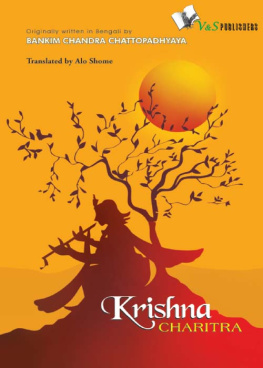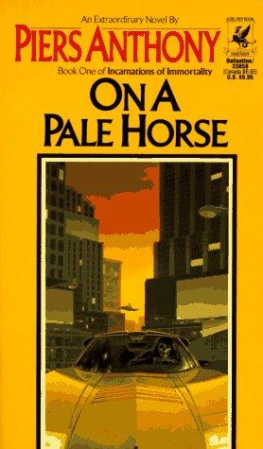GURU
CHARITRA
THE TWO INCARNATIONS OF
LORD DATTATREYA
Edited & Revised by Dr. V.R. Prabhu
JAICO PUBLISHING HOUSE
Ahmedabad Bangalore Bhopal Bhubaneswar Chennai
Delhi Hyderabad Kolkata Lucknow Mumbai
Published by Jaico Publishing House
A-2 Jash Chambers, 7-A Sir Phirozshah Mehta Road
Fort, Mumbai - 400 001
www.jaicobooks.com
Dr. V.R. Prabhu
GURU CHARITRA
ISBN 81-7992-419-X
First Jaico Impression: 2005
No part of this book may be reproduced or utilized in
any form or by any means, electronic or
mechanical including photocopying, recording or by any
information storage and retrieval system,
without permission in writing from the publishers.
Printed by
Sanman & Co.
113: Shivshakti Ind. Estate, Marol Naka
Andheri (E), Mumbai - 400 059.
ePUB Conversion: .
FOREWORD TO THE REVISED EDITION OF
THE GURU CHARITRA
The first edition of the Guru Charitra was well received by the devotees of Sri Dattatreya and other people interested in scriptures. Due to persistent demand we have revised the text and eliminated some of the errors of grammar and other minor omissions.
Sri Narasimha Saraswati was a social reformer, in addition to His reviving the Vedic way of life and raising the spiritual tone of the priestly class. When dealing with illiterate people the best way to achieve transformation and raise people from their ignorance is through stories. Discourses ( Pravachan ) are not easily understood and the principles involved may not be transmitted effectively, thus blocking transformation of people. Thus we find many stories in the Guru Charitra which convey the morals and principles easily to most people.
We trust that this edition by Jaico will contribute to the spiritual zeal of sadhakas and help them rise to higher levels.
With Love Swamisevak
P.B.(Nana)
Paranjpe Founder
Sri Swami Samarth Vishwa Kalyan Kendra Apta
Phata (off Bombay-Goa Road) Near Panvel,
near Mumbai.
th December, 2003
Dattajayanti
FOREWORD TO THE FIRST EDITION OF GURU CHARITRA
Guru Charitra is a scriptural text devoutly followed by spiritual aspirants, mostly in Karnataka, Maharashtra and Andhra Pradesh. Most of the spiritual centers referred to in the text are located in these states.
The Guru Charitra is in conversational form between the master and the disciple clarifying all the doubts of the disciple. Mainly, it deals with biographies of Lord Dattatreya and his subsequent incarnations Sripada Srivallabha and Sri Narasimha Saraswati. In fact, the reading of Guru Charitra gives strength, and encouragement to spiritual aspirants to continue their Sadhana (spiritual disciplines and practices) despite various troubles and travails they encounter in the process from time to time.
The idea of writing the Guru Charitra in English originated in the study circle conducted by Sri Satya Sai Seva Samithi in Chembura suburb of Bombay. The subject was taken up for discussion, chapter by chapter in the weekly meetings. Shri P. B. Paranjape, founder of Shri Swami Samarth Vishwa Kalyan Kendra, participated in the discussions and explained the subtler spiritual aspects contained in the text. It was ultimately decided to compile the chapters in English, in a book form and make it available to English reading public, who could not read the same in other languages.
The late Shri L.N. Joshi had attempted it but he could not achieve his ambition. Shri K.V.R.Rao, now deceased, an ardent devotee of Sri Sathya Sai Baba, took the initiative and enlisted the cooperation and support of Sri Sathya Sai devotees, Chembur, in getting the manuscript typed and corrected. The typescript was perused by Shri N. Kasturi - biographer of Sri Sathya Sai Baba, who effected necessary corrections and changes. Shri K.V.R. Rao entrusted the responsibility of getting it published to Shri PB. Paranjape. Due to lack of facilities, funds and circumstances beyond our control, the book could not be published earlier. Due to the divine grace, today we are placing this sacred book in the hands of readers. At the same time we are fully conscious that we could not do full justice to the subject. Many errors also might have crept in the text for which we crave the indulgence of readers. It may not give full satisfaction to devotees of Lord Dattatreya and they may have valuable suggestions to offer. Even if the readers are spiritually benefited in a small way we consider our efforts as fully rewarded.
We regret our inability to name individually and thank all those persons who made this venture a grand success. However we wish to place on record, our sincere appreciation and gratitude to all those who helped us.
May Lord Dattatreya shower His choicest blessings on all and lead them to reach their ultimate goal of self-realisation.
P.B.Paranjpe
Founder
SRI SWAMI SAMARTH VISHWA KALYAN KENDRA
Bombay
10th May 1995
PREFACE
The Guru Charitra is revered as the most sacred text, in the Datta Sampradaya, by all Dattatraya devotees. Dattatraya essentially an avataar of Vishnu is regarded as a deity in His own right. He is regarded as Avataar of avataars and Guru of gurus. Lord Dattatraya appears under various guises, though His darshan is difficult to attain, because He is always travelling. The lives of two Datta Avataaras are given in this text. The basic text was written in Marathi language, around 1538 A.D. by Saraswati Gangadhar whose mother tongue was most probably Kannada. The text is divided into 51 chapters containing more than 7000 ovis (stanzas) and is a dialogue between Siddhamuni and Namdharak. Tradition divides this text into three kandas; Jnana-kand - chapters I to 24, Karma-kand - chapters 25 to 37 and Bhakti-kand - chapters 38 to 51.
The Dattatraya sampradaya, at that time, was attempting to revive the Vedic heritage, preserve Brahmanical orthodoxy, the system of caste, with an overall emphasis on reviving the rituals in the practice of religion. Many of Guru Charitras chapters are concerned with caste duties, rules and codes of conduct, appropriate ritual performances, etc. However there are powerful social reform messages embedded in the stories, like the exemptions and exceptions to sati, the emphasis and glorification of breast feeding, the necessity for thinking about the consequences of wrong actions etc.
The subject of the Guru Charitra is the life of two holy men revered as the first historical avaatars of Dattatraya, in the 2nd millennium; Sripad Sri Vallabha (C.I 323-53) born in Pithapur, in present day Andhra Pradesh and Sri Narasimha Saraswati (c. 1378-1458) born in Karanja, Akola district in present day Maharashtra. Sri Narasimha Saraswati is a central figure in the regeneration of Sanatana Dharma, is the most revered of the avatars. In his Bhakti Vijay, Mahipati offers a portrait of Sri Narasimha Saraswati; He is identified as a Paramhamsa and an Avadhoot, who soon gave up His sanyas position in the dashanami order. He does not agree that He got the name Saraswati from His connection with the sanyasa order in Kashi. Mahipati said that He was given that name at a tender age since no Brahmin could be compared to Him, for Saraswati resided on the tip of His tongue.
The life of Sri Narasimha Saraswati was spent in primarily preaching varnashrama dharma and enjoining upon His Brahmin followers even more strict regulations, than on other castes or women. He called upon them to restart Vedic ritual and regenerate the Brahmanical code of conduct. During all His itinerant life. He encouraged the practice of Yajnas. The presence of a hill of ashes, near the Ganagapur math, of which handfuls are still taken away as prasad by devotees, leads many to assume that this site must have been one of intense ritual activity (Yagna Bhumi). Unfortunately no writings of Sri Narasimha Saraswati have come down to us; His Mission may be described as that of awakening the Hindus, particularly the Brahmin caste, to the disastrous condition into which they had fallen under Muslim rule and making them conscious of their duty towards society.





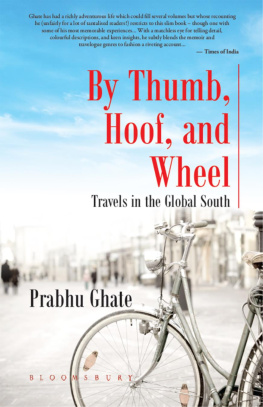
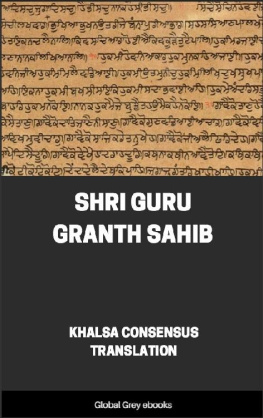
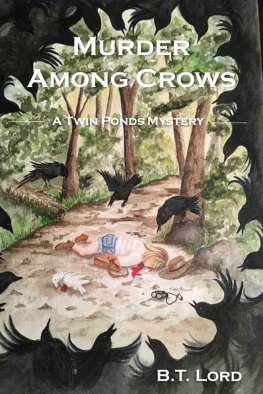
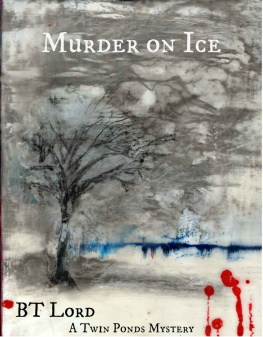
![Anirudh Prabhu [Anirudh Prabhu] - Beginning CSS Preprocessors: With SASS, Compass.js and Less.js](/uploads/posts/book/119148/thumbs/anirudh-prabhu-anirudh-prabhu-beginning-css.jpg)
